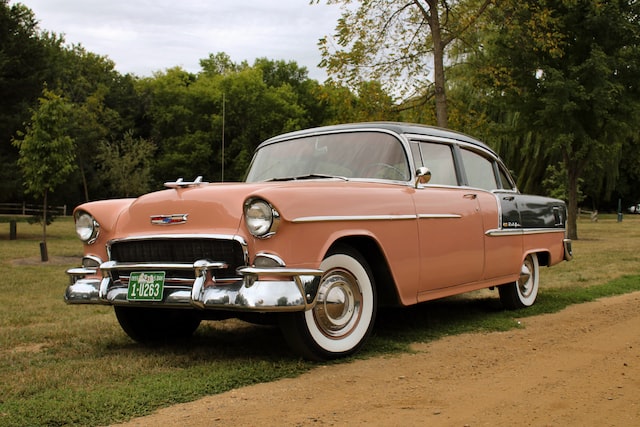Consider your vehicle’s engine’s motor oil to be its lifeblood. Regularly inspecting it is an important part of keeping your engine in good working order and getting the most mileage out of it. The oil lubricates the engine’s interior working components, preventing them from overheating. Besides avoiding dirt buildup, it also keeps the engine clean and protects it from overheating. How to check the oil in a car is a quick and simple task that we recommend you complete every time you fill up your tank. All you’ll need is a cloth or paper towel, and if you have any questions, your car’s owner’s manual.

When to check the oil?
Checking the engine oil in your vehicle is a quick and easy maintenance task that practically any driver can complete. Even if you aren’t confident in your ability to change your own engine oil, chances are you will be able to inspect it. An oil change is recommended for most models every three months or three thousand miles. You may check your engine oil levels in between your normal oil changes to make sure it hasn’t gotten too low or unclean
How to check the oil in a car?
Here are 8 simple steps to help your get to know how to check your oil
Step 1: Locate a Lint-Free Rag
When checking your oil, find a lint-free rag or a scrap of old fabric to use. An old t-shirt is generally fine.
Step 2: Take a look at your owner’s manual
Your owner’s handbook will provide a full description of where your dipstick is located if you are unfamiliar with what is under the hood of your car.
Step 3: Warm Up Your Car
When checking your oil, it’s better to do so when it’s still warm. After a quick trip to the local market or a walk around your neighborhood, it’s a good idea to check your oil.
Step 4: Turn off your car
Before you begin the process of checking your vehicle’s oil, you should check the oil with a car on or off. Make sure to turn off your care
Step 5: Pop the Hood
Pull the handle on the interior of your vehicle, which is normally on the driver’s side door, and then press the lever beneath the hood’s center. Make sure your car’s hood is securely propped up. It’s useless to be embarrassed because you don’t know how to open your hood.
Step 6: Locate the Dipstick
The dipstick is usually found on the left side of the engine in most models. A bright yellow or orange circular handle is frequently visible on the dipstick. A lengthy chunk of metal will slide out of the engine when you pull this car oil dipstick reading handle.
Step 7: Clean the Dipstick and Reinsert
After you’ve found and removed the dipstick, clean it with your rag before installing it. Ensure that the dipstick is fully inserted.
Step 8: Remove the Dipstick and Inspect
Removing the dipstick is the next step. Take a look at the dipstick’s tip. Some models will have a “full” line, while others will have a textured area that indicates the oil pan’s capacity. The color of the oil will be amber. By looking at the dipstick, you should be able to see how much oil is left.
Read more >> How To Wax A Car Properly? | The Comprehensive Guide
What happens if you run out of oil?
It’s critical not to let your engine oil become too low. There is less lubricant for the bearings and other moving parts in your engine when the oil pressure is low. Metal rubs on metal, resulting in irreversible and costly damage. When you’re cornering, the oil pressure warning light may turn on if the oil level drops too low.
What color should your engine oil be?
The new oil is clear and golden in color, but it quickly blackens to a dark brown or black color when used. This darkening is completely normal and causes no concern. When new oil interacts with residual old oil, it might turn black right after you replace it.
If it’s black and the texture is sludgy, though, it’ll need to be replaced.
Coolant or water is leaking into the oil if it appears milky, creamy, or frothy. You should have this checked out by a mechanic.
How long does engine oil last?
It is dependent on the vehicle and the way in which it is driven. The manufacturer’s recommended oil change interval will be listed in your manual. The majority of vehicles have service intervals that are set in stone. This usually entails changing the oil every 9,000 miles or 12 months, whichever comes first.
Some vehicles have different service intervals. In this situation, the car will notify you when it’s time for an oil change based on how it’s been driven and the oil’s quality. If your car is serviced on a varied basis, the recommended oil will be specifically made to last longer.
Checking the oil level in your vehicle is a simple task that takes only a few minutes. You’ll be able to ensure that your engine is adequately lubricated if you know how to check the oil in a car.
If you are planning to get your driver’s license, let’s try our free DMV Practice Test and download it for your IOS and Android devices!

UT Utah License Renewal: A 2025 Comprehensive Guide
Discover the ultimate guide to Utah license renewal! This comprehensive guide delves into the intricacies of renewing your driver's license in Utah,...
February 13, 2023

South Carolina S.C. Driver's License Renewal
The South Carolina S.C. driver's license renewal process is designed to be comprehensive, taking into consideration eligibility requirements, renewal methods,...
February 13, 2023

Pennsylvania PA DMV License Renewal: A 2025 Full Guide
The Pennsylvania PA DMV license renewal process is designed to be comprehensive, taking into consideration eligibility requirements, renewal methods,...
February 10, 2023

